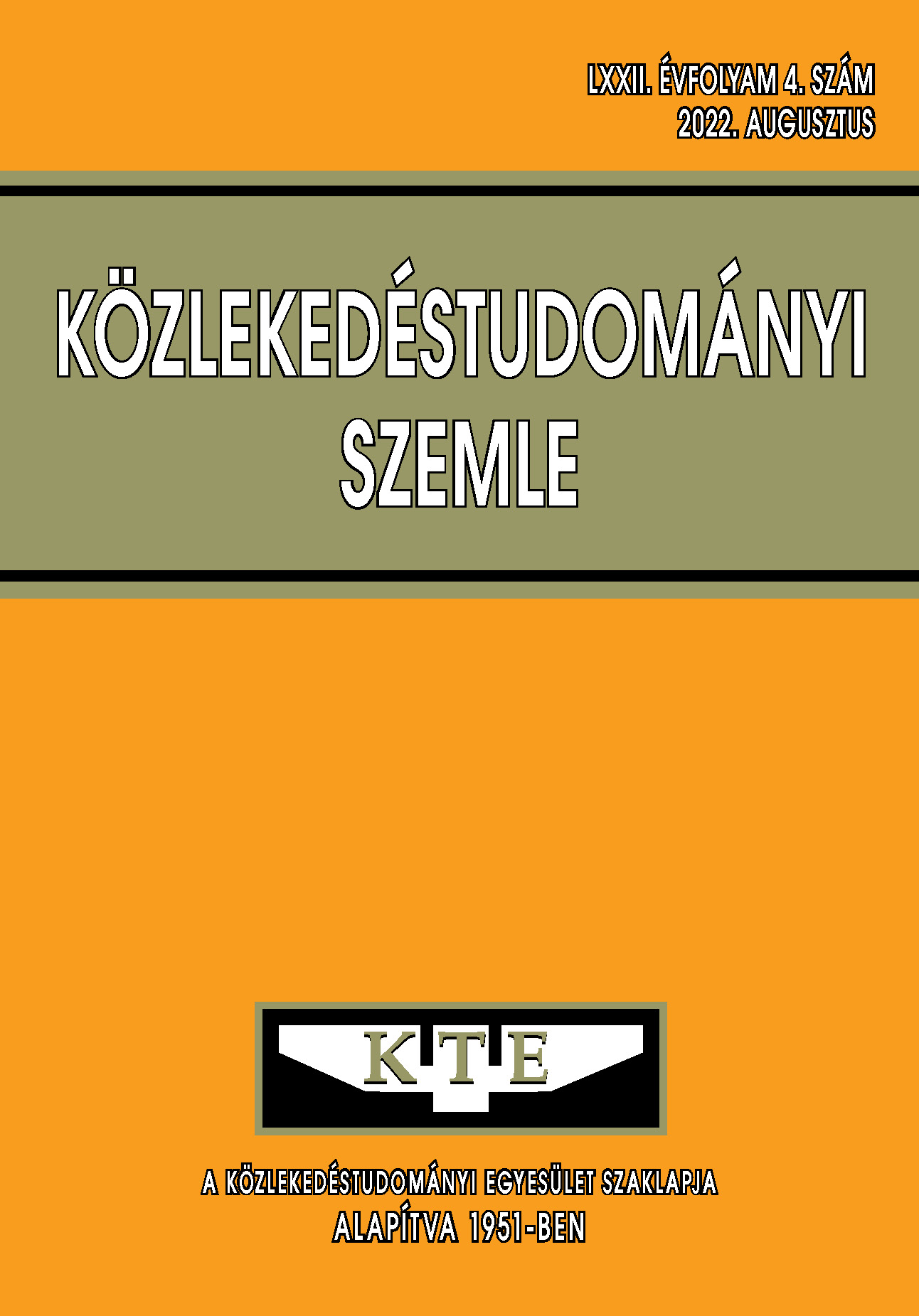Regulating the range of motor vehicles affected and evaluating a sticker scheme in a low emission zone
Abstract
The Ambient Air Quality Directive (2008/50/EC) requires cities that exceed air pollution limit values to develop and implement action plans to take the necessary measures to achieve the air pollution limit values. Establishing Low Emission Zones (LEZ) is a measure that is being introduced by a growing number of European municipalities to reduce the number of polluting vehicles. There is no uniform legislation on LEZs in the different EU Member States, so Hungary does not currently have a policy instrument for the establishment of such zones and no legal framework to facilitate their implementation which would give local governments authority and clear guidance. The aim of this research is to define the range of vehicles covered by the regulation and to investigate a sticker scheme, taking into account best practices abroad, which will help to improve the efficiency of the regulation and control of a Hungarian LEZ.
References
Schraufnagel DE, Balmes JR, Cowl CT, Matteis SD, Jung SH, Mortimer K, Perez-Padilla R, et al. (2019) Air Pollution and Noncommunicable Diseases: A Review by the Forum of International Respiratory Societies’ Environmental Committee, Part 2: Air Pollution and Organ Systems. CHEST 155(2):417–426.
Pestel N, Wozny F (2019) Low Emission Zones for Better Health: Evidence from German Hospitals. SSRN Electronic Journal.
Obrecht M, Rosi B, Potrč T (2017) Review of low emission zones in Europe: Case of London and German cities. Tehnički glasnik 11(1-2):55–62.
Amundsen A, Sundvor I (2018) Low Emission Zones in Europe. Requirement, enforcement and decreasing health inequalities - ProQuest. A171-A172. air quality. Transportøkonomisk institutt.
Ezeah C, Finney K, Nnajide C (2015) A Critical Review Of The Effectiveness Of Low Emission Zones (LEZ) As A Strategy For The Management Of Air Quality In Major European Cities. Journal of
Multidisciplinary Engineering Science and Technology (JMEST) 2:3159–40.
ECORYS Nederland B.V. (2014) Feasibility study: European city pass for Low Emission Zones. Annex A: Standards and Guidance Document
Gruiters J (2018) Improving Air Quality in Border Regions. A case study of effective implementation of a low emission zone in Maastricht. https://studenttheses.uu.nl
Roncière M (2020) Addressing a largescale implementation of low-emission zones in France. DIVA.
Leonhart M (2017) Environmental and Social Effect of the Rotterdam Low Emission Zone. Business Economics.
Campbell A, André M, Carteret M, Pasquier A, Liu Y (2017) Methodology for characterizing vehicle fleet composition and its territorial variability, needed for assessing Low Emission Zones. Transportation Research Procedia 25:3286–3298. DOI: https://doi.org/h3mt
Ellison R, Greaves S, D. Hensher (2012) Medium-Term Effects of London’s Low-Emission Zone
Pasquier A, Andre M (2017) Decomposition of Low emission zone strategies into mechanisms and methodology for assessing their impacts on air pollution. Journal of Earth Sciences and Geotechnical Engineering 7(1):pp. 241-261.
Morton C, Mattioli G, Anable J (2018) A Framework for Assessing Spatial Vulnerability to the Introduction of Low Emission Zones: A case study of Edinburgh, Scotland - White Rose Research
Online. https://whiterose.ac.uk
Quarmby S, Santos G, Mathias M (2019) Air Quality Strategies and Technologies: A Rapid Review of the International Evidence. Sustainability 11(10):2757. DOI: https://doi.org/gkb5dz
Dias (2018) Methodology for air pollution impact assessment of low emission zones in urban areas of Brazil - the case study of Fortaleza. https://repositorio.ufc.br
Articles published electronically are open access (OJS), freely available online and can be downloaded. Authors of articles are not charged any publication or publishing costs (APC). Users have the right to read, download, copy, print, and search the articles, or share the full text with a link.
Authors must declare that their submission has not been previously published in another journal, that financial support has been acknowledged, and that the list of references is complete and accurate, including specification of URLs and DOIs (if available). When submitting a draft article, each author approves the submitted version. Authors guarantee that the article is their original work. Authors are required to participate in the peer review process, follow the advice of reviewers, meet the prescribed deadlines, and, if any, withdraw the submission or correct errors.
All submitted articles are subject to peer review, where the editors request an independent evaluation from at least one expert, ensuring that the reviewer(s) have no conflicts of interest with the authors. The final decision is made by the Editor-in-Chief, who takes into account the evaluations and the suggestions of the editors. The editors and reviewers treat the submission confidentially.
The publisher and editors are committed to maintaining high ethical standards and to preventing publications that involve research misconduct. They follow the COPE guidelines on such ethical issues.
The authors retain copyright and grant the journal the right of first publication under the Creative Commons License (https://creativecommons.org/licenses/by-nc-nd/4.0), which allows others to share the work, while acknowledging the authorship of the work and the first publication in the journal.
The journal archives all published articles, and the journal's owner, the Hungarian Society of Transportation Sciences, will continue to operate the database even if the journal ceases to be published.















